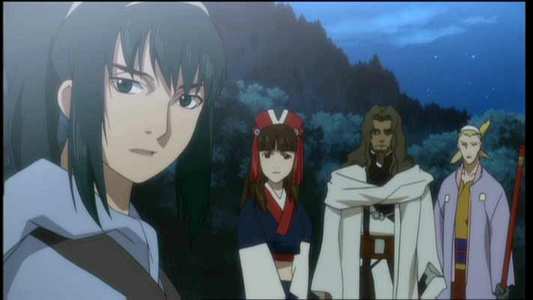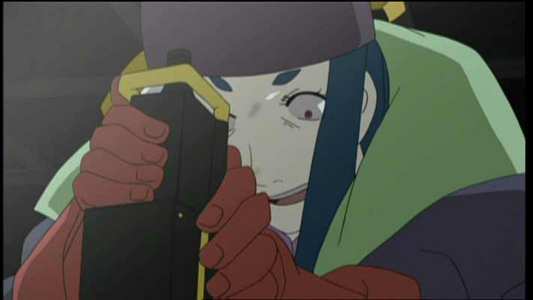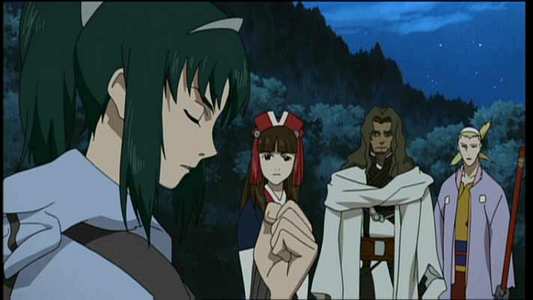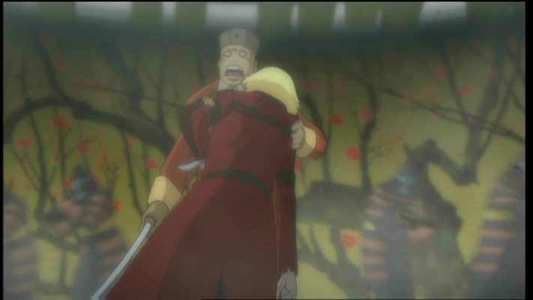Review of Samurai 7: Complete Box Set
Introduction
Talent borrows, genius steals.
A great quote most often credited to Oscar Wilde, and a fitting one to kick off this review, even if it`s hard to tell whether the pre or post comma statement applies in this particular case. The 26-episode `Samurai 7` is yet another re-imagining of Kurosawa`s legendary `Seven Samurai`, this time the story supplanted to the future, or rather, a queer semi-future of sorts. Unlike the manner in which the Grand Beard of Lucasfilm™ took the themes and elements of Kurosawa`s 1958 film `The Hidden Fortress`, remolded them with a sci-fi flavour and created the first of the juggernaut `Star Wars` trilogy, `Samurai 7` actually takes the notion of a world filled with wandering ronin, peasants and merchant castes and transplants them, actually transplants them, to a world with spaceships and robots and all that cool stuff for a more literal transposition of Kurosawa`s wares. No Jedi-type re-imaginings here; in `Samurai 7`, men in long, billowing robes wielding katanas run down the bow of space-faring battle cruisers chopping up their mechanised enemies, all courtesy of our friends at GONZO.
Years after the Great War, A young priestess named Kirara is sent from her village - one constantly under attack from cyborg bandits displaced after wartime - to hire seven samurai to protect their village in return for a plentiful supply of rice. In the city and after much searching, she and her young companions encounter several warriors willing to join her, but the bandits are just the beginning of the problems encountered by the characters, as an authoritarian regime springs up in the capital under the control of a tyrannical emperor.

Video
Anamorphic 1.78:1, `Samurai 7` is an impressive looking show. Rich and colourful, the only real disappointment is that the art direction never manages to achieve the quality of the concept artwork displayed on the cover art and in the menus. It`s a fairly straightforward mix of traditional anime and CGI, the two blending seamlessly, and the only niggles are that its softness from its NTSC origins are often apparent, and now and again the way the animated lighting has been implemented can cause a foggy effect which hampers the detail in the frame.

Audio
Dolby Digital 5.1 squared, in both native Japanese and American - which sounds an awful lot like English apart from the bland drawl they call diction. Yes, the dub isn`t worth enthusing about, especially when the Japanese track has a brilliant delivery that even a language barrier can`t stop from crossing over. The 5.1 means the tracks are full and rich, although compared to some action-orientated anime, the directional usage is relatively tame.

Features
A plethora of the usual suspects grace all seven discs in the set - textless openings and closings, character profiles, trailers and promotional videos (glorified trailers), and the only bonus feature of note is an English voice director/cast commentary on episode 14. As usual, these things aren`t technically minded, but instead an excuse for cast members who`ve never met to wax lyrical about each other`s performances and generally have a laugh.

Conclusion
On paper, this high-concept retelling of a popular, if well-worn, tale sounds like a dream. It`s an anime, it`s got samurai, it`s got spaceships, and all that`s missing are a few ninjas, a pirate or two and the Incredible Hulk and you`ve got a medley of geek awesomeness impressive enough to knock a chocolate-covered Jolene Blalock from all but the most stubborn nerd subconscious. On paper is right, because in practice there`s something a little off about `Samurai 7` - most obvious is the anachronism from which the show builds itself. Despite the fact that this version of the `future` is hardly the stuff of Philip. K Dick - it`s barely futuristic enough to have invented a sex-bot that wouldn`t leave you with a severe case of genital chaffing-cum-shredding - the two worlds are juxtaposed with little attempt to explain how on earth such an occurrence would indeed occur.
And the less said about spaceships modelled after Edo period architecture, the better. Unlike something like `Firefly`, there`s no reason to believe such a co-existence would exist. Suspension of disbelief (ie, logical reasoning) is a prerequisite, and spending some time pondering on flawed alternate timelines wouldn`t hurt. But it`s still an enjoyable, if hardly fresh, anime show. Aside from the setting, it does absolutely nothing, zero, zilch and even nada to distinguish itself from the superfluity of samurai-based anime available on the market, but it manages to get the balance of the action and humour quota per episode just about right and even the minorest of minor issues - like the lack of a truly compelling antagonist and the oddly sedate pace of the first few volumes - aren`t worth mentioning. At least, aren`t worth mentioning unless you`re trying to make a point during a review. Personally, I`d have liked to see a little more openness and fluidity with the backstory as, as it is, the foundation for a lot of the events lies with the histories of culture and war within this universe, and this extensive background is never explored satisfactorily.
In all, even playing it fast and loose with the Kurosawa connection, there`s probably as much to admire in the ingenuity of trying to pull off such a setting as there is to moan about how ham-fisted it seems. Over 26-episodes, the plot, while not the most compelling ever committed to a Post-it, is fairly supple, allowing for some genuinely well-crafted characters (and a few not-so) and plenty of comedic interaction and high-octane conflict between them. In fact, the greatest compliment I could pay to `Samurai 7` is that even after writing a critique that mostly smothers the positives in favour of the negatives and, of course, squeezing in a joke or two at its expense, I`d happily watch it again.
Your Opinions and Comments
Be the first to post a comment!